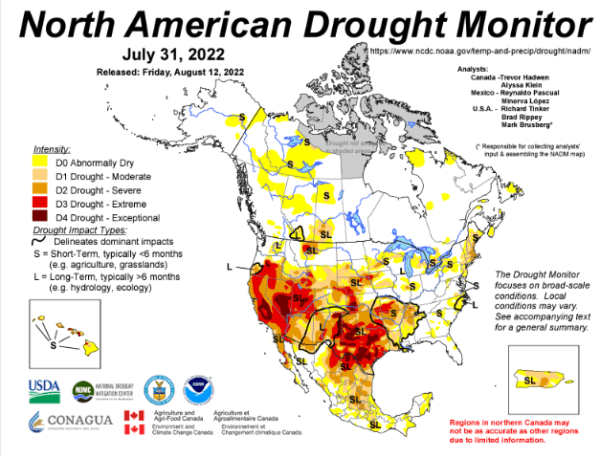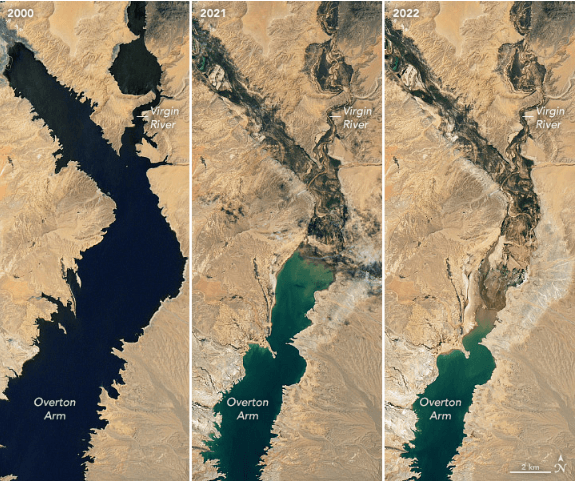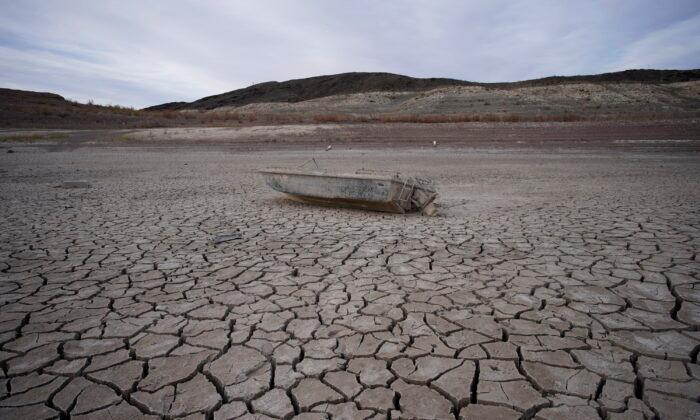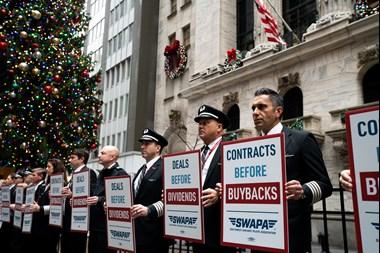The River of Doubt, Rio da Duvida, now known as the Roosevelt River, is a tributary of the Aripuanã River, which, in turn, via the Madeira River, flows into the Amazon. It nearly killed Theodore Roosevelt after he was the first white man to explore it following his loss during the 1912 presidential election. It’s a treacherous river, rarely traveled, and unforgiving.
Europe
On the Rhine, the inland waterway that carries goods and commodities among Switzerland, Germany, France, and the Netherlands, water levels are so low that barges are being loaded well under their capacity in order to be able to navigate the river. Shipping companies are asking—and getting—premiums for transporting barges along the river, exacerbating Europe’s inflation, which printed at 8.6 percent in the eurozone in June.The Seine River is similarly low, with fish dying and the grapes for French wine at risk of dying on the vine. The Po River, in northern Italy, is in similar peril.
North America
Drought conditions across the American Southwest are expected to last until at least November, as illustrated in this map from the National Oceanographic and Atmospheric Administration.
Drought extends to all or parts of the Missouri, Colorado, Platte, and Sacramento rivers, as well as along the Rio Grande. There is also drought in Massachusetts, Connecticut, and other New England states.
Unlike Europe, though, most of America’s inland waterways lay in the Mississippi River basin, and have been mercifully spared from most of the effects of drought and, so, remain still navigable. But there is a movement to divert some of the Mississippi to the Colorado. That proposal is bound to bring about intense political debate.

Lake Mead is critical because it helps provide drinking water and hydropower, via the Hoover Dam, for much of the southwest. The turbines that create the power require a depth of at least 1,000 feet in the Hoover Dam. As of this writing, the water depth is just 1,043 feet.
Asia
In China, temperatures in Sichuan have hit 104⁰F amid the worst drought in more than half a century. According to Bloomberg, daily hydropower, which provides more than 80 percent of the power for the province, has dropped by 51 percent. Factories in the province have been ordered to shut down, which is a key manufacturing center for electric vehicle batteries and solar panels. In the megacity of Chongqing, some shopping malls have been ordered shut until the evening to save on power needed for air conditioning.Summary
Continuing drought could become, and likely is, an existential danger to thousands of companies and industries in the global economy, particularly in regions where hydropower is the primary driver of energy. For many of those companies and industries, energy costs will become prohibitive and imperil their status as going concerns.For other producers, the dangers to water-borne shipping on inland waterways will escalate producer prices and, very likely, cut production for lack of supplies. For workers, that would mean layoffs in manufacturing, transport, warehousing, and sales jobs, just as consumer prices will be increasing because of the shocks to agricultural economies brought about by draught.
From a policy perspective, there is little a government can do, other than to ease some of the acute pain of the drought; something that might be called economic palliative care to ease the pain of, but not cure, supply-side inflation. Countries can loosen their restrictions on the use of carbon fuels to ameliorate near crisis-level hydropower shortages so that coal and natural gas can fire electric-generating plants. Tax reductions might alleviate the enormous costs, by increasing disposable incomes, that consumers will incur if the drought continues. It also might help to reverse recent monetary-tightening trends among, for example, the U.S. Federal Reserve, the Bank of England, and the European Central Bank, to enhance liquidity of profit-constrained industrial companies and retailers.
I will leave to others to dispute or advocate that “climate change” is the cause of these droughts, as that matter is well beyond the scope of this article. My personal view is that localities are better equipped to address UHIE, and electricity and water conservation, than national or regional governments.





